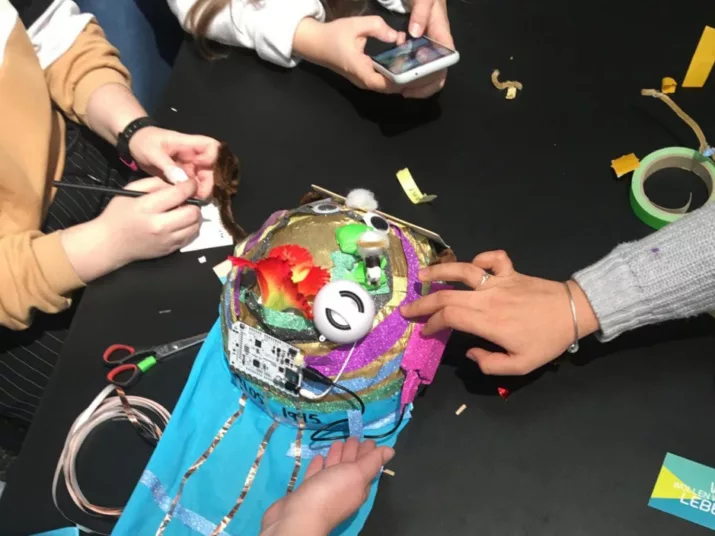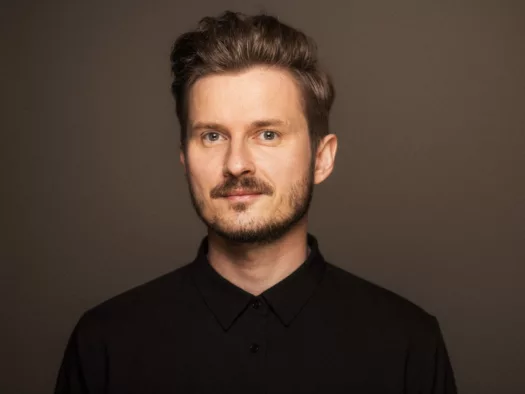
The 4 Cs are applied in Futurium workshops.
The skills and competences learners need in the 21st century
The Four Cs – More Than Just Knowledge
Critical thinking, communication, collaboration and creativity are the areas of competence that lie behind the Four Cs model of learning. These are the skills – all closely linked to digital literacy – that must be promoted in order to prepare young people for the challenges of tomorrow, according to the Partnership for 21st Century Learning (P21).

The 4 Cs are applied in Futurium workshops.
“They are more than just buzzwords,” says Christian Engelbrecht, Education Consultant at Futurium. “No single one of these skills is less important than any of the others. They are mutually dependent.” The Four Cs model is not new: its origins date back to the 1980s in the USA; the concept became more widely known in Germany through Andreas Schleicher (OECD).
“Thinking used to be something that more or less happened to you”
In a blog post, educational researcher Lisa Rosa describes her own experience of graduating from secondary school lacking in the ability to think critically: “Thinking was something that more or less happened to you, instead of something that you could control yourself.” However, Rosa regards thinking as essential to solving the more complicated problems – especially, in her opinion, those related to society as a whole – that we are facing. “More people must learn to think critically; that is, more people than have done so until now – and preferably everybody,” she urges.[1] Rosa gives three reasons why the Four Cs model should be considered a point of reference for teaching in the 21st century:
- More and more jobs are being taken over by machines.
- Each new type of work requires more complex thinking, as well as self-reliant decisions rooted in a particular context, and interpersonal skills.
- The societal problems that need to be solved are so complex that they can only be dealt with by means of collective intelligence.[2]
Critical thinking is an attitude that consists in seriously wanting to find out how something is, how it has become and how it could be changed.
The Four Cs model is therefore based on cultural change. During the course of the 20th century, technologisation had already led to the disappearance of many jobs and the appearance of others. This change has become further accelerated in the 21st century. Therefore, it’s worthwhile constantly to focus on skills that workers will need in the future. “The Four Cs represent an attempt to rethink school and learning under the conditions of digitality, that is, in a world where humans and technology are connected. It’s all about skills that enable pupils and students to respond to the challenges of our time,” says Engelbrecht.
What could sustainable learning look like?
Christian Engelbrecht is Education Consultant at Futurium.

Photo: Ali Ghandtschi
“In my school days – and I’m sure many will have experienced the same – learning often meant cramming knowledge before exams. In the long run, however, this doesn’t work. When looking for a viable definition of what sustainable learning could be, the Four Cs provide at least an initial answer.” In concrete terms, the success of the model becomes visible when schools hold project weeks. “Pupils design, tinker about with, and build things by themselves to understand simple, and also more complex, processes. This DIY-approach enables a more in-depth analysis of the topics and contents on a cognitive level, and this also has a longer-lasting effect.”
Futurium’s workshops, which are offered in cooperation with Junge Tüftlerand the Education Innovation Lab, draw on the Four Cs too. For example, when participants invent their own tools of the future as part of a workshop, they work together (collaboration), consult with each other (communication), make prototypes using everyday objects (creativity) and consider what effects their objects might have on future society (critical thinking). “For many pupils it’s important to become active themselves,” says Engelbrecht. “It’s not our goal to turn all children into programmers, but we want to enable individual approaches by using digitality as an active tool.”
Learning to Live with Ignorance
A common criticism of the Four Cs model of learning is that the learning content becomes arbitrary. The model by no means intends to replace the traditional content of curricula; however, the way in which content is taught is increasingly important today. “Teachers have an important role to play in this regard. They need to accept the fact that they don’t always know the right answers and must be willing to get involved in an open-ended process.” This also makes learning much more exciting for everyone involved. At the same time, it’s a great challenge for teachers, who must first make the necessary space for creativity and other learning processes within the school system with its fixed structures and timetables.
Critics of the Four Cs model also fear that education lobbyists from the private sector could exert their influence. However, according to Engelbrecht, the concept is first and foremost about a content-related discussion: “Teachers are certainly not interested in helping businesses increase their turnover.” Education is definitely a branch of the economy too, but this should not lead to a general rejection of innovative concepts. “In order to initiate societal processes of change, you have to bring together a great many parties, conflicting interests and different perspectives.”
What comes after the Four Cs?
Nevertheless, we shouldn’t forget that the beginnings of the Four Cs model go back to the 1980s. In view of the dynamic cultural change, the question of topicality arises: “From today’s perspective, I can imagine that new facets will be added that supplement the Four Cs. Collaboration could be further developed to involve non-human players, for instance, in the form of joint learning with artificial intelligence,” says Engelbrecht. The interpretation of the individual skills also needs to be re-evaluated over and over again. One example is the concept of creativity: “Our understanding of creativity has a lot to do with a societal ideal,” says Engelbrecht. “Maybe we’ll realise that we’ve fallen partly for a neoliberal idea. Instead of questions such as ‘What will advance my start-up and how can I further develop my company in a creative way?’, the focus could also be shifted to ‘How do we want to live and work together?’. At least, that’s what I would wish for.”
[2]https://prezi.com/ys9g0sh5tvys/verlust-und-neugewinn-lernen-und-lehren-im-medienumbruch/